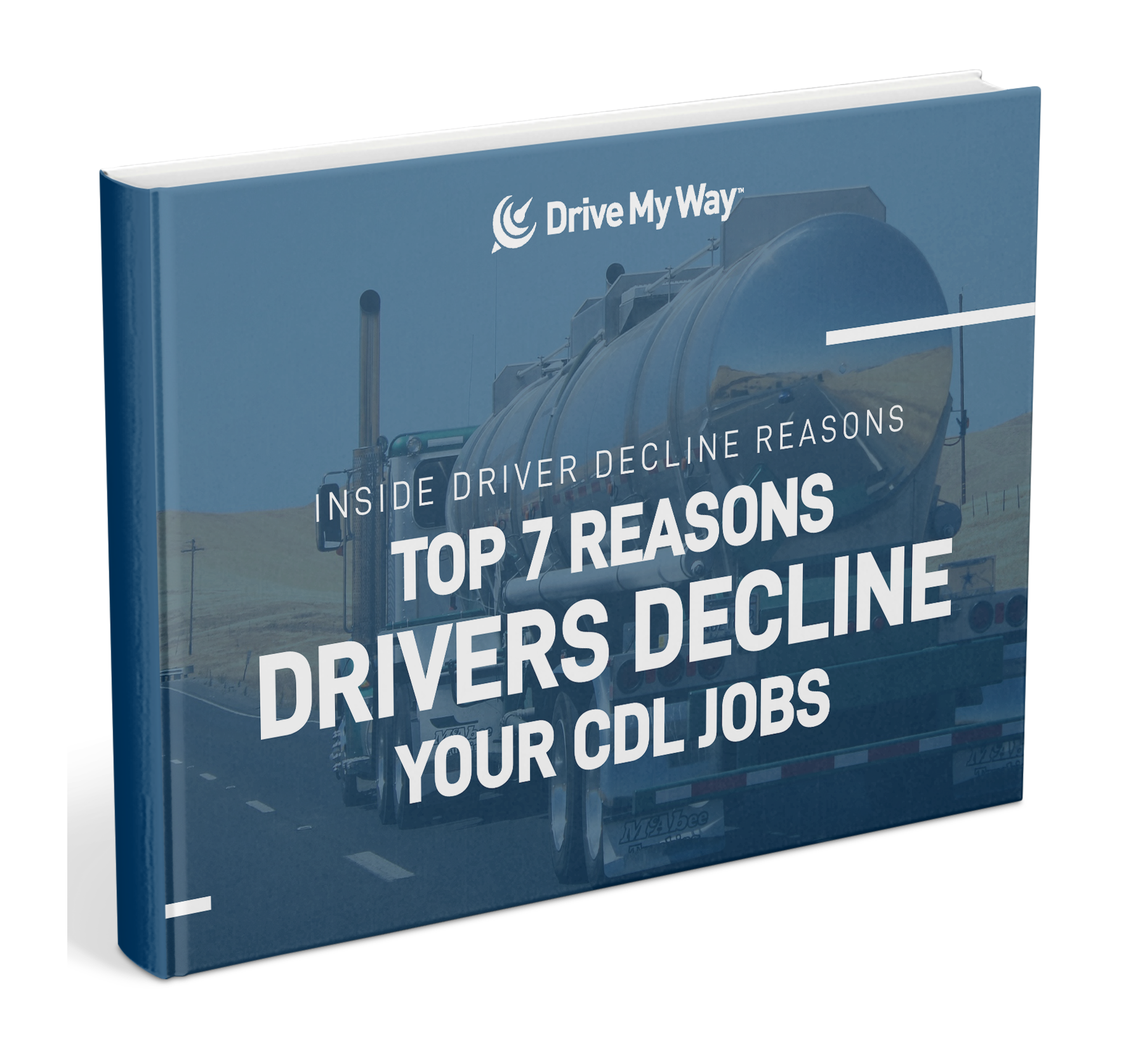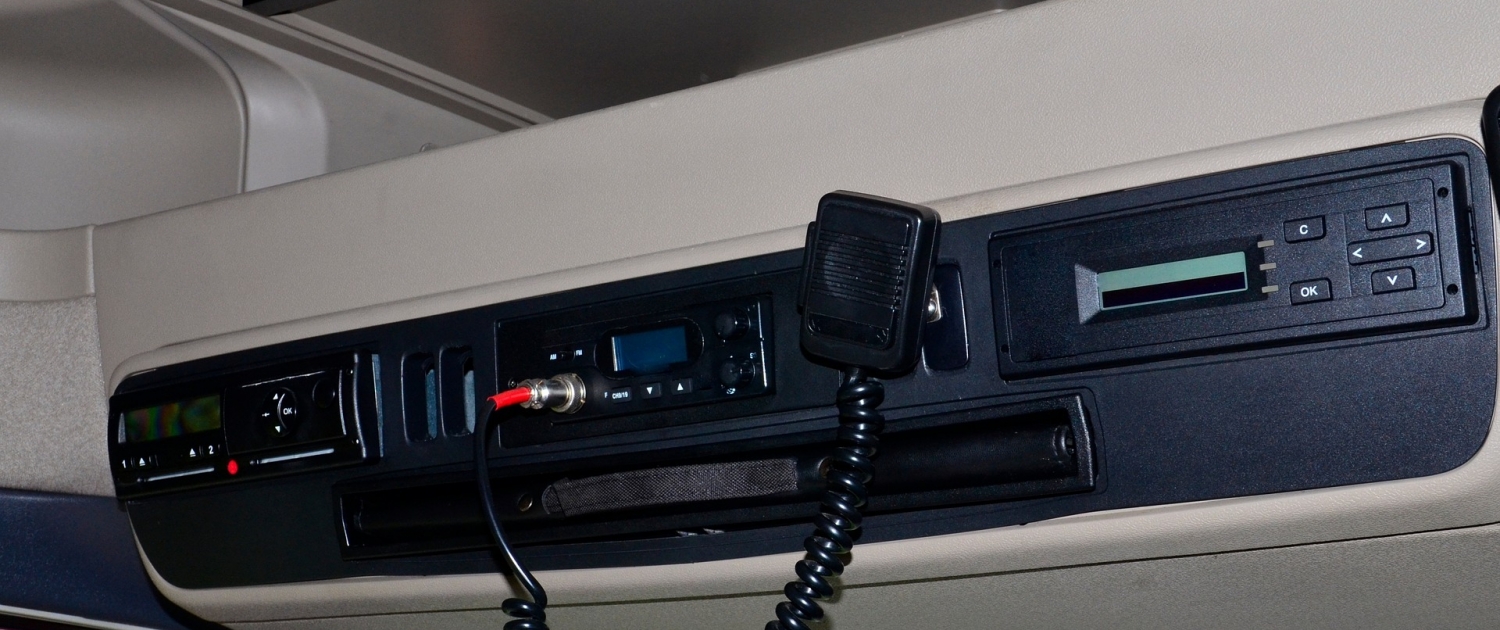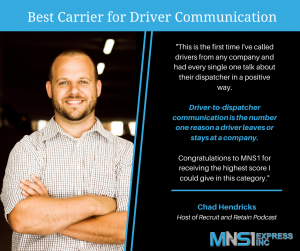
Driver retention is one of the most important, and sometimes most challenging, parts of the recruiting process. With the current driver shortage and evolving recruiting practices, it’s more imperative than ever to stay ahead of the curve and keep your drivers safe, satisfied, and engaged.
One sure fire way to foster a team environment, while improving driver safety and retention rates, is to create a driver mentor program. By pairing new hires with more experienced team members, you can show your drivers that you appreciate their work and are willing to invest in them. In addition, mentoring relationships at any stage of your career can help you achieve personal and professional development goals, such as learning a new skill, strengthening a competency, or becoming more productive, just to name a few. Keep reading to find out why a mentor program could be the best move for your company.
Mentor vs. Manager: What’s the Difference?
You might be asking yourself: what’s the point of a mentor when you have a great team of managers on the payroll? Mentors play a less formal role, allowing management to maintain the necessary level of professionalism. A mentor gives new drivers a chance to ask questions they might not be comfortable asking managers, and takes the pressure off while they are initially familiarizing themselves with company protocols. Mentoring is open and collaborative relationship between a mentor and mentee that is built on trust. The relationship is defined by both parties. It can be formal or informal.
“Engagement is the key to learning and development and being involved in a mentoring relationship can be quite profound as both mentors and mentees make themselves vulnerable, trusting in the process as they confidentially share insecurities, struggles ,mistakes, and valuable learnings with each other. It’s a level of transparency that makes this experience unique and helps accelerate one’s personal and professional development. Having a strong mentoring program not only helps to engage and advance women in the organization, it builds supportive relationships and fosters a culture of learning.”
—Beth Potratz, President and CEO, Drive My Way
What Are the Benefits?
By instating a driver mentor program, you aren’t just helping your newest team members. You are also helping the experienced drivers who become mentors, as well as your company as a whole!
For the mentee, the benefits cannot be understated.
- A low pressure way to learn about company culture and expectations.
- Access to an experienced driver’s tips, tricks, and advice.
- Guidance whenever they have questions.
At the same time, experienced drivers who take on the responsibility of becoming a mentor will experience benefits too.
- A chance to progress their career by developing coaching skills.
- Increased pay or other company incentives.
- The feeling of company recognition for being selected in this important role.
Besides increased retention rates, there are other ways a mentor program can benefit your company.
- Lower your insurance rates with safer drivers.
- Foster a team environment through increased positivity and communication.
- Save money on training seminars.
Changing the Face of Trucking, One Mentor at a Time
Driver mentor programs also offer another benefit, one that will help in developing the entire trucking industry. As more women and members of underrepresented communities enter the field, mentors are a great way to ensure they receive the support and guidance they need while forging new paths in the industry.
Organizations such as Women In Trucking (WIT) offer their own mentorship opportunities, including their Mentor Match Program and online community platform Engage. Through these programs, WIT promotes connection, support, and mentoring for women entering the field and offers a chance for experienced drivers to give back.
Although programs like these are changing the trucking industry, there is no better way to support your drivers than by starting at a company level. A driver mentor program demonstrates to these employees that you appreciate and prioritize them, enabling you to grow your fleet while attracting top talent from diverse backgrounds.
Driver mentor programs are a great way to save money and time while demonstrating to your drivers that their success is your top priority. Mentors also encourage diversity and growth in an evolving industry and are becoming an important differentiating factor in today’s highly competitive market.
We’d love to hear any mentor success stories, or lessons you’ve learned while pairing up drivers, so be sure to reach out to us on social media!







 One of the best ways to improve dispatcher-driver relationships is by creating more common ground. Most dispatchers have never been CDL drivers, and most drivers have never been dispatchers. Both sides need to have a basic understanding of what the other is doing in their day-to-day life and to
One of the best ways to improve dispatcher-driver relationships is by creating more common ground. Most dispatchers have never been CDL drivers, and most drivers have never been dispatchers. Both sides need to have a basic understanding of what the other is doing in their day-to-day life and to 
 Like any hard-working employee, truck drivers want to feel respected and
Like any hard-working employee, truck drivers want to feel respected and 


 It’s no surprise that pay and benefits are the biggest reason that truck drivers leave one position for another. Carriers are finding that they need to go above and beyond from a compensation and benefits perspective, as offering the industry average simply isn’t cutting it anymore.
It’s no surprise that pay and benefits are the biggest reason that truck drivers leave one position for another. Carriers are finding that they need to go above and beyond from a compensation and benefits perspective, as offering the industry average simply isn’t cutting it anymore. Carriers who over-promise and under-deliver are finding that that model for attracting drivers is no longer solid. Truck drivers have more options than ever before when it comes to which carrier they can drive for, so being honest and transparent are the best things carriers can do during the interview and hiring process if they want to recruit top talent.
Carriers who over-promise and under-deliver are finding that that model for attracting drivers is no longer solid. Truck drivers have more options than ever before when it comes to which carrier they can drive for, so being honest and transparent are the best things carriers can do during the interview and hiring process if they want to recruit top talent.  As the saying goes, employees don’t leave the company. Employees leave the people at the company. If a truck driver finds themselves working with a dispatcher they truly dislike, it won’t be long before they start looking for a different opportunity.
As the saying goes, employees don’t leave the company. Employees leave the people at the company. If a truck driver finds themselves working with a dispatcher they truly dislike, it won’t be long before they start looking for a different opportunity. Comprehensive CDL Recruitment Solutions
Comprehensive CDL Recruitment Solutions






 Now more than ever, the ability for carriers to retain truck drivers is key. As the labor market
Now more than ever, the ability for carriers to retain truck drivers is key. As the labor market The last thing a driver wants is a carrier that over-promises and under-delivers. Before posting a job, carriers should take the time to l
The last thing a driver wants is a carrier that over-promises and under-delivers. Before posting a job, carriers should take the time to l Sometimes it takes a carrier posting a job advertisement on Facebook for them to find out that their current drivers are unsatisfied. Maybe their pay is too low, their benefits aren’t desirable, or the carrier over-promises and under-delivers.
Sometimes it takes a carrier posting a job advertisement on Facebook for them to find out that their current drivers are unsatisfied. Maybe their pay is too low, their benefits aren’t desirable, or the carrier over-promises and under-delivers.  Instead of constantly investing in lofty sign-on bonuses to attract new drivers, carriers should implement referral bonus programs and
Instead of constantly investing in lofty sign-on bonuses to attract new drivers, carriers should implement referral bonus programs and 
 It’s a driver’s market. If you want to be a trucking recruiter who
It’s a driver’s market. If you want to be a trucking recruiter who This might seem obvious, especially to an experienced truck driver recruiter, but it couldn’t be more important. The Commercial Carrier Journal
This might seem obvious, especially to an experienced truck driver recruiter, but it couldn’t be more important. The Commercial Carrier Journal  Gone are the days where a clean, mobile-friendly user interface was a nice, extra touch used by only the most tech-savvy trucking recruiters. According to the 2019
Gone are the days where a clean, mobile-friendly user interface was a nice, extra touch used by only the most tech-savvy trucking recruiters. According to the 2019  Coming into a new year or quarter, it is tempting to take on a heavy load, but don’t get caught in the frenzy. Your hours are limited. Take the time to prioritize your leads based on urgency and fit early on to increase your overall productivity.
Coming into a new year or quarter, it is tempting to take on a heavy load, but don’t get caught in the frenzy. Your hours are limited. Take the time to prioritize your leads based on urgency and fit early on to increase your overall productivity. For the better part of ten years, the trucking industry has been faced with what’s commonly been called a “truck driver shortage”. The thought is that there’s simply not enough drivers to fill the open positions that trucking companies have.
For the better part of ten years, the trucking industry has been faced with what’s commonly been called a “truck driver shortage”. The thought is that there’s simply not enough drivers to fill the open positions that trucking companies have. 
 A common misconception is that truck drivers, like a lot of other workers in our country, don’t want to work anymore and are exiting the industry. The fact is that there are many drivers who do want to work. They just have more options for where they can work and won’t hesitate to make a move if they find a carrier that’s offering better pay, a better work environment, and better home time
A common misconception is that truck drivers, like a lot of other workers in our country, don’t want to work anymore and are exiting the industry. The fact is that there are many drivers who do want to work. They just have more options for where they can work and won’t hesitate to make a move if they find a carrier that’s offering better pay, a better work environment, and better home time Since the problem isn’t a shortage of drivers, but a problem of retaining drivers, the solution is simple; make working conditions better for truck drivers. If you look at any data around truck driver happiness, you’ll see that there’s a laundry list of issues that frustrate drivers.
Since the problem isn’t a shortage of drivers, but a problem of retaining drivers, the solution is simple; make working conditions better for truck drivers. If you look at any data around truck driver happiness, you’ll see that there’s a laundry list of issues that frustrate drivers.  Recruiters should focus on what they can control. This includes
Recruiters should focus on what they can control. This includes  Referring to the problem that the trucking industry is facing as a shortage of truck drivers shifts the blame off of carriers and onto truck drivers. Instead of focusing on improving the conditions that drivers are faced with, (low pay, sparse home time, demanding deadlines) calling it a shortage simply writes off the issue as “truck drivers are too picky and don’t want to work.”
Referring to the problem that the trucking industry is facing as a shortage of truck drivers shifts the blame off of carriers and onto truck drivers. Instead of focusing on improving the conditions that drivers are faced with, (low pay, sparse home time, demanding deadlines) calling it a shortage simply writes off the issue as “truck drivers are too picky and don’t want to work.” As truck driver retention continues to be an issue across the industry, companies should take every opportunity to show their drivers that they’re appreciated for the work they do day in and day out. One of the best ways to show your carrier’s appreciation is to take time to celebrate a driver’s work anniversary.
As truck driver retention continues to be an issue across the industry, companies should take every opportunity to show their drivers that they’re appreciated for the work they do day in and day out. One of the best ways to show your carrier’s appreciation is to take time to celebrate a driver’s work anniversary.  There’s no substitute for cash. Rewarding drivers who’ve stayed on with your carrier with a
There’s no substitute for cash. Rewarding drivers who’ve stayed on with your carrier with a  Aside from cash, gift cards are another great option. You could go with something universal that would work for almost anyone, like an Amazon or Target gift card, or you could go for something a little more personalized.
Aside from cash, gift cards are another great option. You could go with something universal that would work for almost anyone, like an Amazon or Target gift card, or you could go for something a little more personalized.  Gift cards and cash are great, but to certain drivers, there’s a chance they’ll come across as a little impersonal. Instead,
Gift cards and cash are great, but to certain drivers, there’s a chance they’ll come across as a little impersonal. Instead,  It’s hard to overstate the value of an unexpected day off. Rewarding loyal drivers with a surprise extra day of vacation or PTO can be the best way to celebrate, especially if you know the driver has a family/children they can enjoy their time off with.
It’s hard to overstate the value of an unexpected day off. Rewarding loyal drivers with a surprise extra day of vacation or PTO can be the best way to celebrate, especially if you know the driver has a family/children they can enjoy their time off with. When you’re celebrating a driver who’s been with your carrier for 5, 10, 15 or more years, consider getting them a
When you’re celebrating a driver who’s been with your carrier for 5, 10, 15 or more years, consider getting them a 
